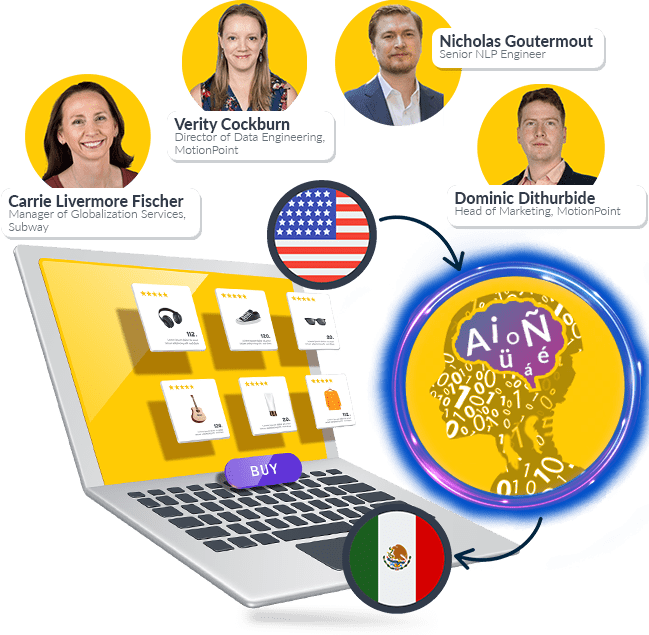It’s not widely known, but the automotive industry was an early adopter of the web. Back in the mid-Nineties, car manufacturers were connecting with customers online, long before most folks even knew what that newfangled “Internet” actually was.
Back then, the auto industry’s digital experiences were largely informational. Fast-forward nearly 20 years, and we see a radically changed digital landscape. Providing product data is merely the starting point for these sites. Today, they also generate sales leads, reinforce brand trust, increase awareness in products and services, and retain customers. They’ve come a long way.
And so have we, as car buyers. Thanks to the abundance of information the web provides (and its instant accessibility, via the increasing ubiquity of smartphones and web access), we’re far more empowered as consumers. We now participate in a shopping phenomenon nicknamed “ROPO”—Research Online, Purchase Offline.
This is a significant departure from traditional car sales, and it’s an important one to understand. According to JD Power, today’s car buyers conduct nearly 14 hours of online research before making a vehicle purchase. As a result, dealership visits have plummeted in the past decade. Indeed, nearly 80% of new vehicle buyers use the Internet for assistance in their purchase process, says one report.
This buying trend isn’t going away. More importantly for this conversation, this trend transcends language and culture. Spanish-speaking Americans and French-speaking Canadians are two key North American demographics that the auto industry’s marketing initiatives largely underserve in their preferred languages. They’re also the demographic groups with the biggest growth potential.
Automakers, get ready to learn how these two markets purchase cars, and how you can best connect with them online. When you put these customers in the driver’s seat, in their preferred languages, you just might win big.
The Hispanic & French Canadian Opportunity
There’s plenty of research about the North American automotive market, but very little of it specifically addresses U.S. Hispanic or French Canadian consumer trends and buying habits. We intend to change that with some exclusive data gleaned from our operation of several localized sites—but first, let’s examine some publicly-available information:
U.S. Hispanics
According to Pew Research Center, there are more than 54 million Hispanics living in the United States, or over 17% of the population. That number will grow to nearly 120 million by 2060.
In five years, Hispanics’ purchasing power will reach $1.7 trillion. That jaw-dropping figure has captured the attention of several visionary automotive makers. These companies recognize that Spanish-speaking U.S. Hispanics remain an underserved market.
“When you look at the population and the demographics, it’s the fastest growing demographic,” Mark Fields, president and CEO of Ford Motor Company, said earlier this year. “And we have worked very hard… to make sure that we have the right emphasis on this great community.”
That’s a smart move. Hispanics are expected to be the auto industry’s leading growth engine for the next 30 years. Last year alone, Hispanics purchased 15% more car and light trucks than in 2013, contributing more than 250,000 sales.
French-Speaking Canadians
French is the mother tongue of nearly 25% of Canada’s population, most of whom live in the province of Quebec. (About 80%, or more than 6.5 million, of Quebec’s population are native French speakers. 95% of the province’s population speaks French as its first or second language.) Canada’s purchasing power parity is estimated at over $1.5 trillion USD in 2013.
The Canadian automotive market in French-dominant provinces is also very attractive. In 2013, over 400,000 units were sold in Quebec alone.
Quebec accounts for 26% of all vehicles sales in Canada.
Gas prices are also often lower in Canada, the employment rate is increasing, and vehicle loans are increasingly affordable. This is especially seen in the Canadian finance market, as the number of new-vehicle loans has grown much faster than inflation and GDP—by 13% in Q4 2014.
Our Exclusive Analysis: User Behavior and Trends
For more than a decade, MotionPoint has operated dozens of localized websites for auto manufacturers. Based on exclusive data and extensive market knowledge, we have an unrivaled perspective of consumer behavior in many markets, including the U.S. and Canada.
We recently examined the performance of nearly a dozen localized Spanish and French automotive sites that we operate for the American and Canadian markets. The following user behavior is based on metrics for the first half of 2015.
Engagement
Some general differences immediately stand out between U.S. Hispanic and French Canadian online car shoppers. For starters, Spanish-speaking Americans view nearly 10% more pages per visit than their French-speaking Canadian counterparts.
This doesn’t necessarily translate into quality leads, however. Bounce rates on our French Canadian sites were about 7% lower (better) than the U.S. Spanish sites. Further, French Canadians spent 17% more time on-site than Hispanics.
Canadians also had a rate of 90% higher returning visitors.
Does this mean U.S. Hispanics aren’t as engaged online car shoppers as French Canadians? A closer look provides a nuanced answer:
- The French Canadian sites received an average of 71% of their traffic from Canada, with the remaining 29% hailing from users across the world.
- However, the U.S. Spanish sites’ domestic traffic was only 27%. The remaining 73% hailed from users beyond the U.S. market.
- This goes a long way to explaining the reduced engagement: Many times, U.S. Spanish sites provide a rich and crisp content experience not available to international users in their own market.
- In fact, this is a common pattern seen on almost all U.S. Spanish sites. Indeed, Mexican residents alone generate 13% of the all traffic to Spanish sites worldwide.
Localized sites in North America often generate traffic from global users because of the high-quality content. International users visit these sites since they can’t find similar information on their local site, or do don’t have a local site to serve their market.
Traffic & Conversion
Both French-speaking Canadian and U.S. Hispanic users mainly preferred to use search engines to locate localized automaker websites. Organic traffic generated via search was the biggest traffic source for both sites. On average, 45% of traffic generated the U.S. Spanish sites was organic, while the French Canadian site averaged 41%.
This evidence suggests automakers in these markets have a great opportunity to increase their traffic and improve conversions. They can accomplish this using two simple implementations:
- “Hreflang”—This HTML attribute tells search engines which language to serve, and in which market. Implementing this tag on both French Canadian and U.S. Spanish sites will decrease unwanted traffic from international markets. The result? Improved engagement metrics and conversions.
- Schema markup—Schema markup is a kind of website code that helps search engines return more informative results for users. This means users can view more information on a product or service, which provides them with a sense of the page’s content before clicking.
The second-highest source of traffic for both markets was direct traffic. (More French Canadian users visit sites directly than U.S. Spanish users, our data reveals.) We recommend automakers mention their translated sites in all local marketing efforts, to help increase awareness in its target segment. This also improves in-language brand recognition.
Interestingly, the third-largest traffic source is referral traffic from car brands’ primary-market sites. (These are often in English.) According to our examination, U.S. Spanish sites have a higher percentage of referral traffic than French Canadian sites.
MotionPoint’s proprietary language detection technology played a key role in U.S. Spanish sites receiving higher traffic from new visitors. In addition, this MotionPoint-exclusive service played a strong role in generating return visits to French Canadian sites. The technology saves a user’s language preference, ensuring return visits are always experienced in the customer’s language of choice.
Product Preference
Do U.S. Hispanics and French-speaking Canadians have a preferred vehicle in mind, while conducting online research? Our exclusive data and analysis—based on examining product page views and other engagement metrics for both groups—suggests they absolutely do.
If their online behavior is any indication, U.S. Hispanics love sports cars. They were the most-researched vehicle type, based on our findings. Second-most popular? subcompact cars. Third place goes to the compact cars. This jibes with a recent announcement that the luxury compact segment is seeing 100% of its U.S. growth from Hispanic sales.
French Canadian consumers have very different tastes. Our analysis revealed that full-size pickups were the most-preferred vehicles. Compact cars took second place. The Canadian compact car market is quite important for carmakers—according to an Autos.ca article, more than 350,000 compact cars were sold in 2011, ranking even ahead of pickups (260,000) and compact sport utilities/crossovers (268,000).
Sports cars ranked third as the most-researched vehicles for French Canadian users.
Wrapping Up
Automakers that wish to grow their North American sales and brand awareness would be hard-pressed to find two markets more primed for online engagement. U.S. Spanish speakers and French Canadians are currently underserved online in their preferred languages. Both exhibit signs of high potential.
While many automakers support U.S. Hispanics online, they still fall short at the point of sale (POS) and after sales facilities.
As Chevrolet’s Tim Mahoney recently put it, “If we want to find new roads and grow as a brand,” the Global CMO said, “we want to grow with the Hispanic community.” The same philosophy applies to the French Canadian users, whose interests often take a business-interest backseat to their English-speaking countrymen.
In an ever-changing environment, MotionPoint provides its automaker clients with this kind of timely information, localized knowledge, technology and expertise for alternative languages/markets, to ensure they’re ahead of the competition.
Last updated on November 24, 2015


